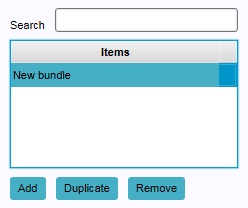Event
Event
An event is an occurrence or happening. In software specifically, an event is an internal message that something has happened, to which a program can respond.
How events relate to the Tygron Engine
Events in the Tygron Engine are occurrences which can be detected by the program. When an occurrence is detected, the Tygron Engine will execute an event. An event by itself does not have an effect but is by default an empty container. This container can be filled with an event that will be triggered when the event is fired. The simplest example of an event being fired is the planning of a measure, or the answering of a message. Events can have a number of different effects. Because of this, they allow an editor to create a more complex project, and as such a more effective experience for the users.
Where events can be used
Places where events can be triggered are the changes of state for a measure, the answers which can be given for a message, and the activation of levels.
Event Bundles
It is also possible to create event bundles. Event bundles are collections of events that can be triggered as one package. The advantage over loose events is that event bundles can be triggered by multiple sources. Event bundles can be used to trigger events at specific points during a cinematic. Additionally, event bundles can also be added to action menus of stakeholders. This means that it's possible to provide users with an option, solely to fire events. This can be useful when, for example, they must have the ability to set the allowed water level increase for an area, to rewatch a cinematic, or to trigger the sending of a predefined message.
Server events and client events
There are two kinds of events: server events and client events.
Server Events
- Main article: Server Events.
Server events are events which are communicated to the server, and may have effects for all stakeholders. An example of this is the activation of a measure. This may affect the 3D world and the indicator scores; changes which are also visible and possibly important to other stakeholders.
Client Events
- Main article: Client Events.
Client events are not communicated to the server and and are usually a graphical effect for the stakeholder who triggered the event. Examples of this include flashing an action menu or an indicator to draw the user's attention, or the visualization of a weather effect.
Adding and removing event bundles

You can create (empty) event bundles, which can then be given events. An event bundle which does not contain events can be used as any other event bundle, but will have no effects.
- Select "Tools" in the ribbon header.
- Select "Event Bundles" in the ribbon bar.
- Select "Add" in the left panel.
- Select "Tools" in the ribbon header.
- Select "Event Bundles" in the ribbon bar.
- In the left panel, select the event bundle you wish to duplicate.
- Select "Add" in the left panel.
- Select "Tools" in the ribbon header.
- Select "Event Bundles" in the ribbon bar.
- In the left panel, select the event bundle you wish to remove.
- Select "Add" in the left panel.
Adding, removing and editing events
Template:Editor ribbon Because events can be added and removed to a number of elements in a project, please see the respective articles on those items for more information on where to add and remove events. For example, if you wish to add an event to a measure, please see the article on measures. Similarly, for information on how to connect event bundles to elements in a project, please see the respective articles on those elements for more information.
For the exact steps for adding, removing, and changing events, please see Editing Events.